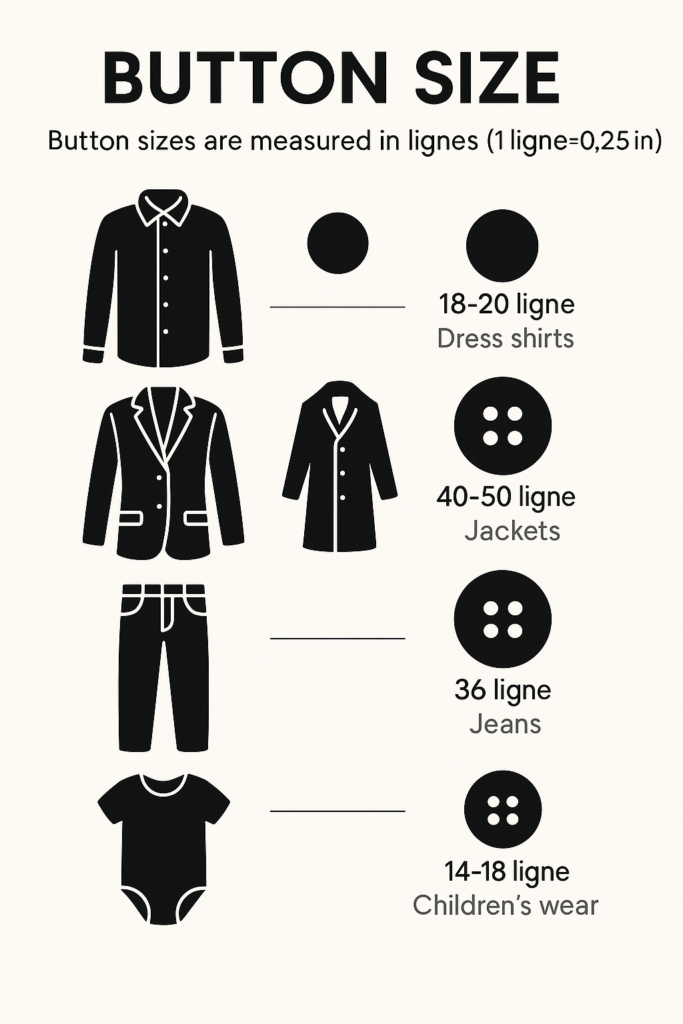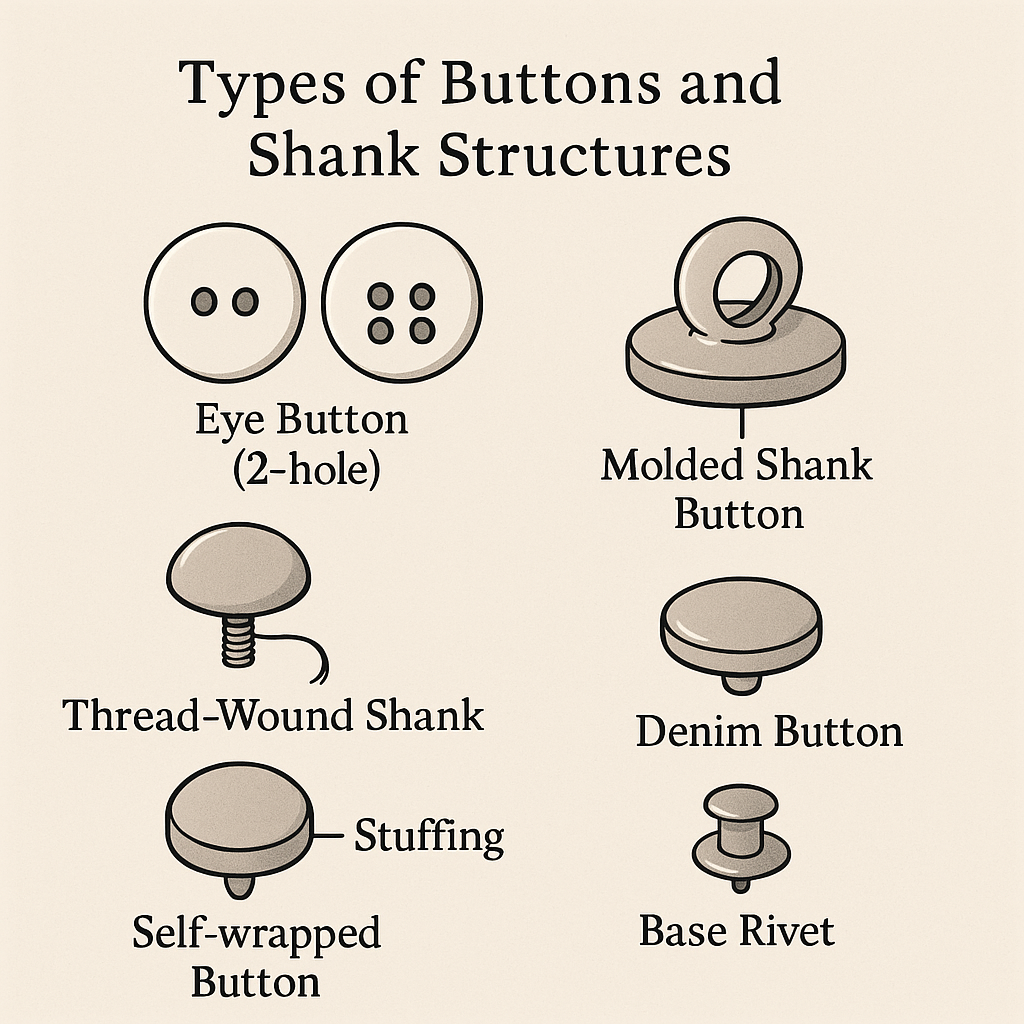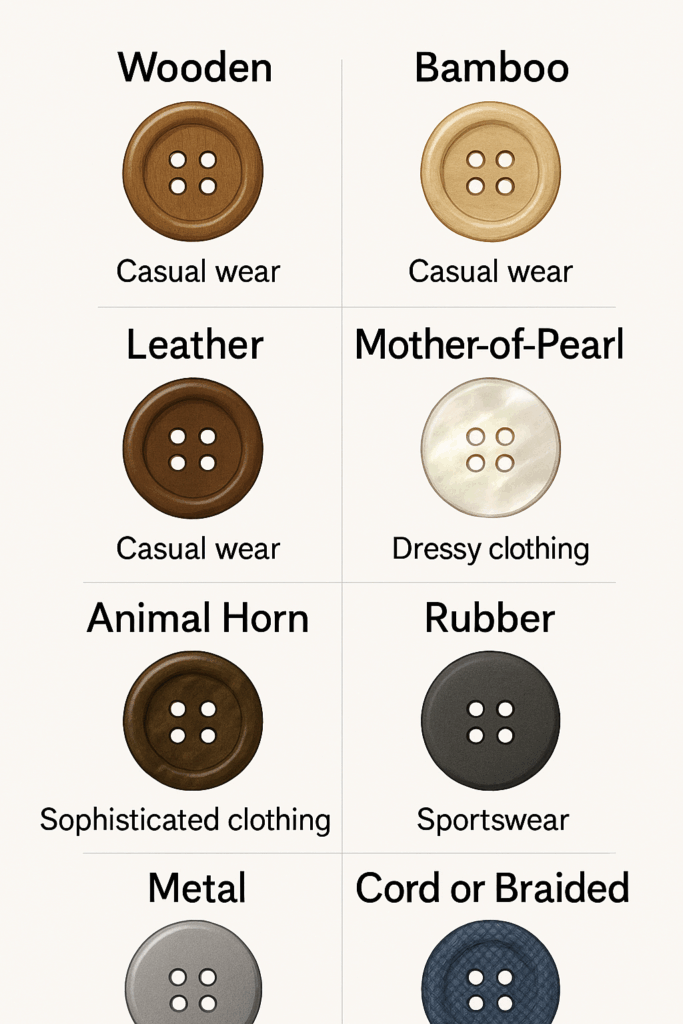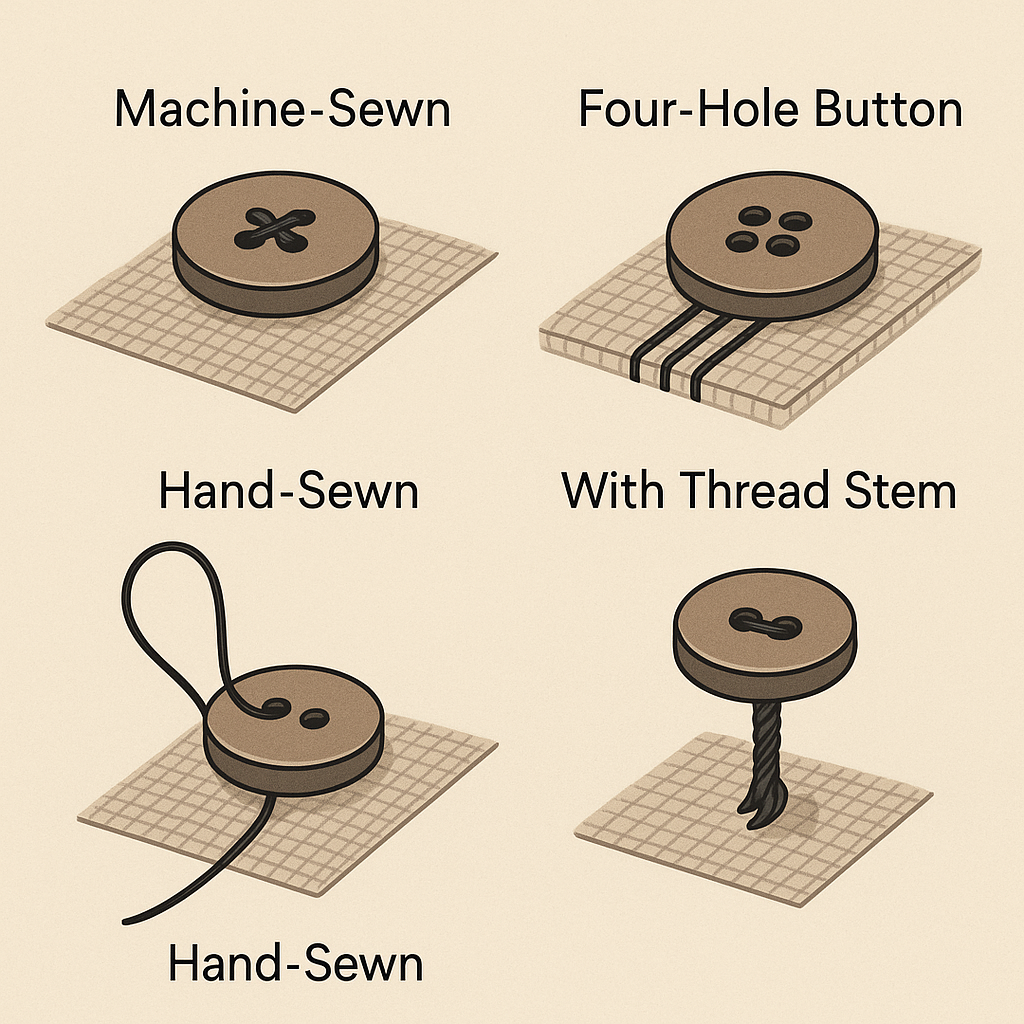🔘 Buttons in Fashion: Function, Form, and Fabrication
Buttons are one of the oldest and most iconic garment fasteners, essential not only for functionality but also for their decorative charm. Whether closing a shirt, enhancing a blazer, or embellishing a coat, buttons remain a key detail in fashion design.
What Are Buttons?
Buttons are small, often circular objects that pass through buttonholes or loops to secure two pieces of fabric. They come in a wide variety of materials, including plastic, wood, metal, shell, and fabric-covered versions, and are available in countless shapes and sizes.
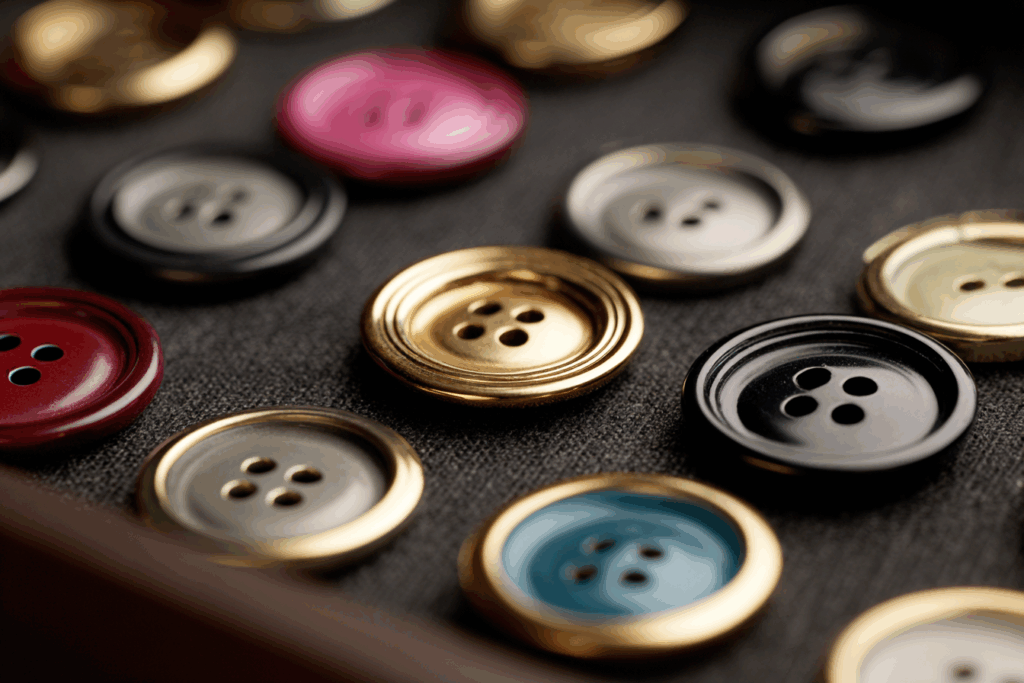

🔍 Benefits of Using Buttons
✅ 1. Versatility
- Used across all garment types: shirts, blouses, coats, suits, dresses, etc.
- Can be both functional and decorative.
- Ideal for both structured and soft silhouettes.
✅ 2. Design Flexibility
- Offer an opportunity to add style and branding (e.g., engraved logos).
- Available in various styles: flat, shank, toggle, snap, etc.
✅ 3. Material Compatibility
- Work well on lightweight fabrics (e.g., chiffon blouses) and heavier materials (e.g., wool jackets).
- Easier to apply on non-stretch materials compared to zippers.
✅ 4. Garment Preservation
- Less likely to cause damage or stretching, unlike zippers which can be rigid or snag fabrics.
- Easily replaceable if lost or damaged.
Buttons vs. Zippers: When to Choose Buttons
| Feature | Buttons | Zippers |
|---|---|---|
| Flexibility | More flexible for various body types | Rigid fit, less forgiving |
| Weight Suitability | Ideal for light or heavy fabrics | Best for sturdy materials |
| Design Role | Can be hidden or exposed stylishly | Often utilitarian in appearance |
| Common Use | Shirts, suits, blouses | Jackets, jeans, technical gear |
| Replacement | Easy to replace individually | Difficult and costly to replace |
🎨 Style Impacts of Buttons
Buttons have the power to influence the entire aesthetic of a garment:
- Contrasting buttons can add visual interest.
- Color-matched buttons offer a seamless look.
- Decorative buttons can elevate a simple silhouette into something eye-catching.
For instance, women’s shirts often use buttons instead of zippers for a softer, more refined appearance. Likewise, blazers favor buttons to preserve the integrity of the garment’s lines and curves, which zippers may distort.
Pro Tips for Button Selection in Design
- Match button weight to fabric weight to avoid fabric sagging.
- Use interfacing or reinforcement behind buttonholes to prevent tearing.
- For outerwear, choose buttons that resist temperature-related brittleness (like resin or metal).
- Always position buttons symmetrically for a professional finish.
Conclusion
In the realm of fashion, buttons are more than just a closure — they’re a statement. With their rich history, wide material range, and balance between function and flair, buttons remain a staple in both casual and formalwear. Whether you’re a designer, manufacturer, or fashion lover, understanding the role of buttons in garments is essential to achieving quality and beauty.
